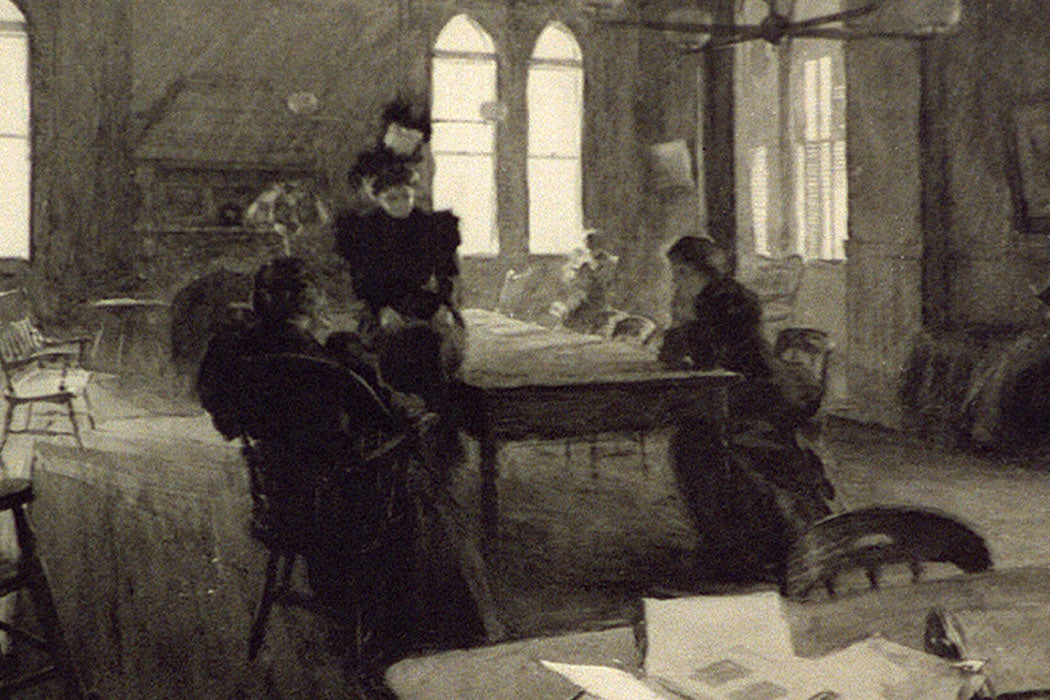During the second half of the nineteenth century, women began to move more freely in public. It was a new world—and one that didn’t quite know what to do with women. Abigail A. van Slyck tackles one unexpected facet of that public revolution: the public library, which once welcomed women with sex-segregated reading rooms.
Public libraries may seem like low-key places today, but back then they were perceived as being fraught with danger. Libraries had traditionally been private male spaces, and when they first opened to women, critics wondered whether it was decent for women to openly traverse stacks and climb stairs, accessing potentially immoral books and running into strangers along the way.
“Of particular concern were ‘library loafers,’ unredeemable working-class men whose loitering thwarted the noble purposes of the public library,” writes van Slyck. These supposed loafers were thought to frequent the library to read betting notices in newspapers, and to leer at women.
And so, women’s reading rooms—a kind of extension of the “separate sphere” philosophy of the age—were born. At one point, the rooms were common in public libraries throughout the United States, and examples could be found in cities including Boston, San Diego, and Seattle.
Though some of these spaces were actual rooms, most were segregated alcoves or spaces within the library that were designated as women’s only. Soft design elements like paintings and frescoes emphasized femininity, while domestic details like carpets and parlor-like upholstery evoked women’s home sphere.
Tellingly, these spaces broadcast women’s supposed inferiority in reading skill, taste, and desire. Often, they were placed in basements or next to children’s rooms or administrative offices. They contained fewer, less functional tables than men’s spaces, and were filled with reading material that reflected stereotypes about their intellect and proper roles.
“While the general reading rooms provided serious readers with large rectangular tables that encouraged extended, solitary examination of hefty tomes,” writes van Slyck, “ladies’ reading rooms typically provided tables that suggested a very different interaction with books.” Some spaces, she notes, were not even designed for reading—they were intended, instead, for letter-writing.
These special spaces were designed to keep prying loafers out, but they were often visible from other parts of the library and even resembled stages or shadowboxes. “The male gaze, appropriately directed,” writes van Slyck, both maintained social order by policing women’s behavior and encouraged men to be more moral by exposing them to the spectacle of well-behaved women.
As librarianship became more professional, however, librarians became more involved in design. Bound to get as many books in the hands of as many patrons as possible, librarians began welcoming working-class readers—even the ones they once feared as loafers.







